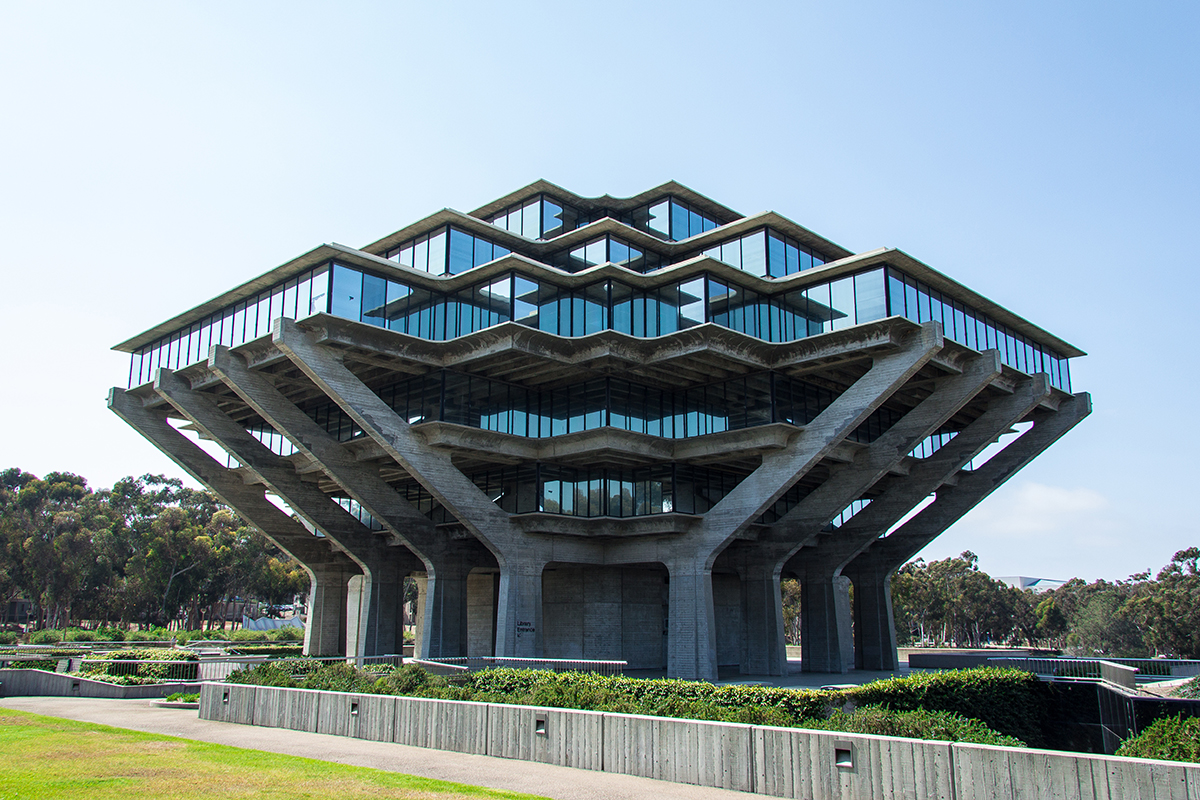Have you ever seen a building that makes you feel a mixture of awe and bewilderment, as if you were in front of a huge work of raw art? That’s brutalism at its finest. This architectural trend, which emerged strongly between the 1950s and 1970s, offers a bold, stripped-down aesthetic that continues to provoke debate. Characterized by the prominent use of untreated concrete and a minimalist style that eschews ornamentation, brutalism is distinguished by imposing geometric forms and robust structures that exude a sense of solidity and durability. Although polarizing, Brutalism has left an indelible mark on the history of modern architecture, and continues to fascinate architects and enthusiasts alike.
The postwar architectural revolution
Brutalism emerged in the context of the postwar period, a time when the reconstruction of devastated cities required economical and functional architectural solutions. Le Corbusier, a key figure in the movement, introduced the concept of “béton brut” (raw concrete), which became the distinctive emblem of the style. His innovative design for the Marseille Housing Unit stands as a paradigmatic landmark, inspiring countless buildings in Europe and beyond.
The aesthetics of bare concrete
Brutalism is not just a style; it is a statement of principles. Its focus on functionality and its rejection of ornamentation separate it from other architectural currents. Brutalist buildings are characterized by a rough, unpolished appearance, with the predominant use of materials such as concrete, brick, steel and glass. These materials are presented in an honest manner, without hiding the construction methods, which defines the essence of brutalism.
Examples of brutalism
In Spain, brutalism is impressively manifested in the Torres Blancas in Madrid, designed by Francisco Javier Sáenz de Oiza. These towers, with their design evoking huge concrete trees, represent a fascinating combination of functionality and aesthetics. Another outstanding example is Walden 7 in Barcelona, a creation by Ricardo Bofill that stands out for its labyrinthine structure and bold forms. Internationally, the Trellick Tower in London and the Breuer Building in New York exemplify how brutalism has been adapted in different cultural and geographical contexts.

Controversies of brutalism
Brutalism is a divisive issue. While some consider it an authentic and challenging architectural expression, others see it as cold and alienating, often associated with totalitarian regimes. The style has sparked heated debates about its value and its impact on the urban landscape. Initiatives such as #SOSBrutalism have sprung up to preserve these concrete monuments, highlighting their importance in architectural history.
An evolving style or a vestige of the past?
Today, brutalism remains a hot topic in the architectural community. Some see it as a vestige of the past, while others see it as a continuing source of inspiration for exploring new forms of architectural expression. As modern architecture moves forward, brutalism continues to challenge conventions and offer a unique perspective on design.
A towering legacy
Brutalist architecture, with its unmistakable aesthetic and focus on material honesty, has left a profound mark on architectural history. Although controversial, it remains a testament to the courage and innovation that defines modern design. The brutalist structures that endure in our cities remind us of the boldness and vision that this style represents, inviting us to reconsider our perceptions of beauty and functionality in architecture.
Boost your career
Brutalist architecture, with its bold aesthetic and focus on material honesty, marks a profound legacy in modern design. If you are interested in exploring these principles and addressing the challenges of contemporary architecture, our Master in Project Design, Administration and Management with a Specialty in Architecture and Urban Planning is ideal for you. This master’s degree will provide you with the skills and knowledge necessary to lead innovative projects and transform the urban landscape. Take advantage of this opportunity to advance your career and delve into topics that will shape the future of architecture. Find out more about the program and how it can impact your future career by visiting this link.
Sources:
Architectural brutalism: what is it?

